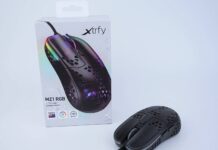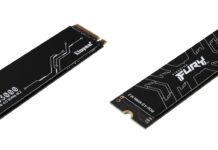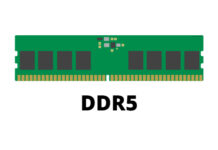
802.11ac (Wi-Fi 5) has been the mainstream Wi-Fi standard for quite some time now. Although 802.11ad was introduced with theoretical gigabit-capable throughput, it is limited in transmission range and lacks supported devices. Fortunately, new standard called 802.11ax or Wi-Fi 6 is coming in 2019.
OFDMA
802.11ax has chosen to use OFDMA (Orthogonal Frequency-Division Multiple Access), instead of OFDM (Orthogonal Frequency Division Multiplexing), to better utilize the Wi-Fi signal’s bandwidth.
In 802.11ac, each channel can only accept traffic from a single user at the same time. Other devices will need to queue up and wait, even there is still unused bandwidth. Now, with OFDMA, each channel are separated into multiple pieces, which each piece can transmit data from different users. This method will greatly increase efficiency and reduce latency, especially with lots of Wi-Fi clients.
MU-MIMO
Some of the existing 802.11ac routers/devices already support MU-MIMO (Multi-User, Multiple-Input, Multiple-Output), for up to 4 devices concurrently. 802.11ax upgrades to transmit to 8 devices simultaneously and capable of supporting both Uplink and Downlink MU-MIMO.
Throughput
At launch, 802.11ax will use the original 2.4 GHz and 5 GHz bands, but will eventually expand to cover from 1 GHz to 7 GHz. The channel width will be identical to 802.11ac, including 20 MHz, 40 MHz, 80 MHz, 80+80 MHz and 160 MHz. Theoretically, 802.11 ac will be able to achieve speed up to 433 Mbps at 80 MHz and 1 spatial stream, 6.9 Gbps at 160 MHz and 8 spatial streams. 802.11ax should reach up to 600 Mbps and 9.6 Gbps at the same conditions.
Other Improvements
The inclusion of BSS coloring further increase the efficiency for transmission, by adding a special BSS header to each packet. This can prevent Wireless Access Points to wait for a long period of time, when the channel has other traffic.
802.11ax adds Target Wake Time (TWT), that schedules specific clients when to wake or sleep. Devices do not need to wake up all the time to check if there is a transmission incoming, which should help preserve battery life for mobile devices.
802.11ax compatible routers/Access Points/devices should be available starting from 2019.
Feel free to leave comments below, if you have any opinion about this website. Share the website around if you enjoy reading it. Subscribe to our Newsletter or follow our Google+, Facebook and Twitter.
Support this website simply by shopping in Amazon. It will give us small kickbacks, if you use the above affiliate links to make any purchases, which will help us grow.





















